This is one in a series of posts on the Sony alpha 7 R Mark IV (aka a7RIV). You should be able to find all the posts about that camera in the Category List on the right sidebar, below the Articles widget. There’s a drop-down menu there that you can use to get to all the posts in this series; just look for “A7RIV”.
Over the years, I have evolved a method for measuring focus shift and focus accuracy. It involves shooting a focusing target and a checkerboard ramp designed for computer analysis of focal plane. Here is the test setup with a Fuji GFX 100 on the camera stand ready to go.
And here is what the camera sees, showing you the focusing target that I used for this test, but the camera in this shot was also the GFX 100:
I mounted a Zeiss Batis 135 mm f/2.8 on the a7RIV. Can I just say one more time how much I love that lens? Its balance is perfect on the a7x cameras, it is sharp wide open, it has low longitudinal chromatic aberration (LoCA), and the other aberrations are well controlled. It is a sweetheart of a lens. The first thing I measured was the focus shift as you stop the lens down, with the target 3 meters away.
I’d like to go to narrower f-stops, but this technique becomes less accurate past f/5.6 at this distance and focal length. There are 16 measurements per tested aperture. They are plotted as dots. I measure the focus location in each of the Adobe RGB color planes, and which plane the measurement came from is indicated by the color of the dots. I’ve plotted the mean, mean-plus-standard-deviation, and mean-minus-standard-deviation values as lines. The amount of scattering in the dots and the distance between the mean-plus-standard-deviation and mean-minus-standard-deviation gives you an idea of the experimental error. The vertical axis is focus error at the image sensor in micrometers, with positive numbers indicating back-focus.
To get a better idea of how this will influence photography, consider the circles-of-confusion (CoCs) on the sensor implied by that much focus error:
I’ve taken the liberty of assigning negative diameters to indicate front-focusing. The pitch of the a7RIV is 3.76 um. This means that the worst case focus shift causes a CoC of about the size of the pixel aperture. For most purposes, errors this small can be ignored.
Now using AF-S, focus priority, spot mode, and the small spot size:
On average, this is about as good as you could do with manual focusing, but the spread indicates that, for critical work, you’ll want to take several shots if you use AF. Truth be told, it’s a good idea to take several shots, refocusing for each, if you’re using MF, too.
Now using the wide mode, with face detect on:
The spread gets a little worse at f/2.8. You’ll notice a few shots that were wildly off there, and also ath f/3.2 and f/4.
I consider this good performance.
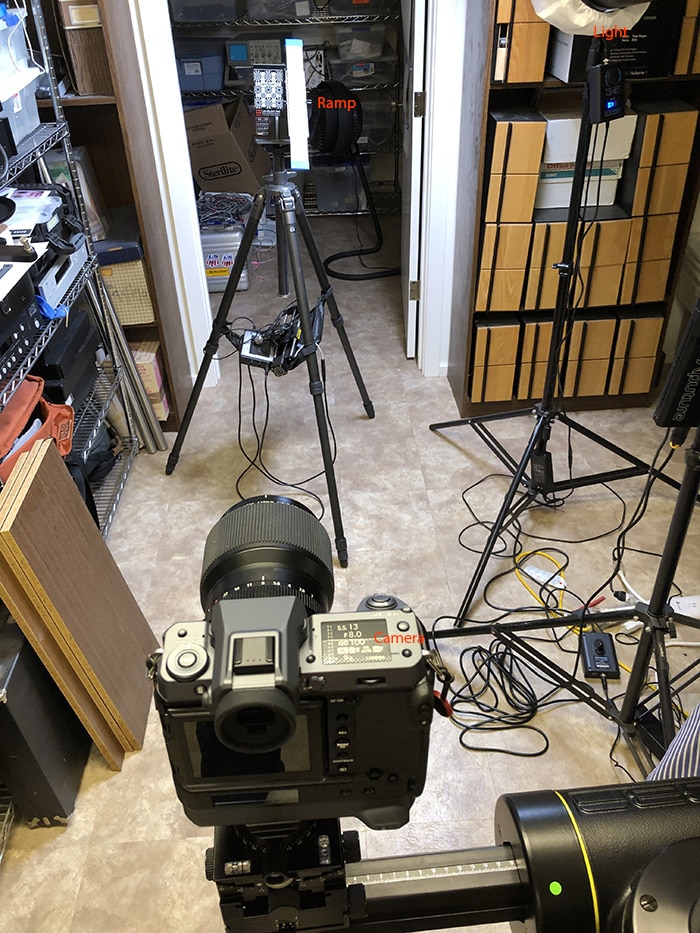

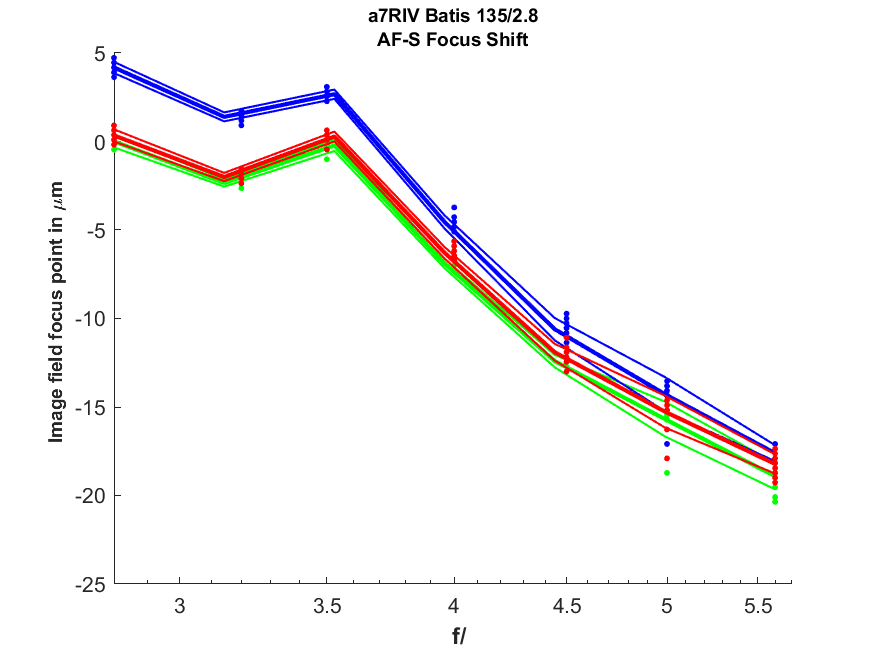
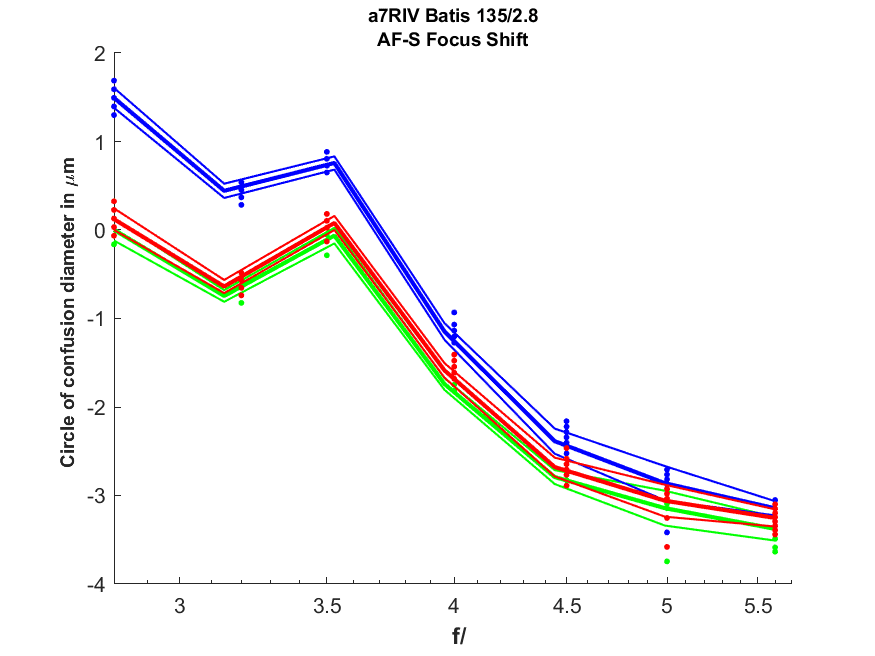
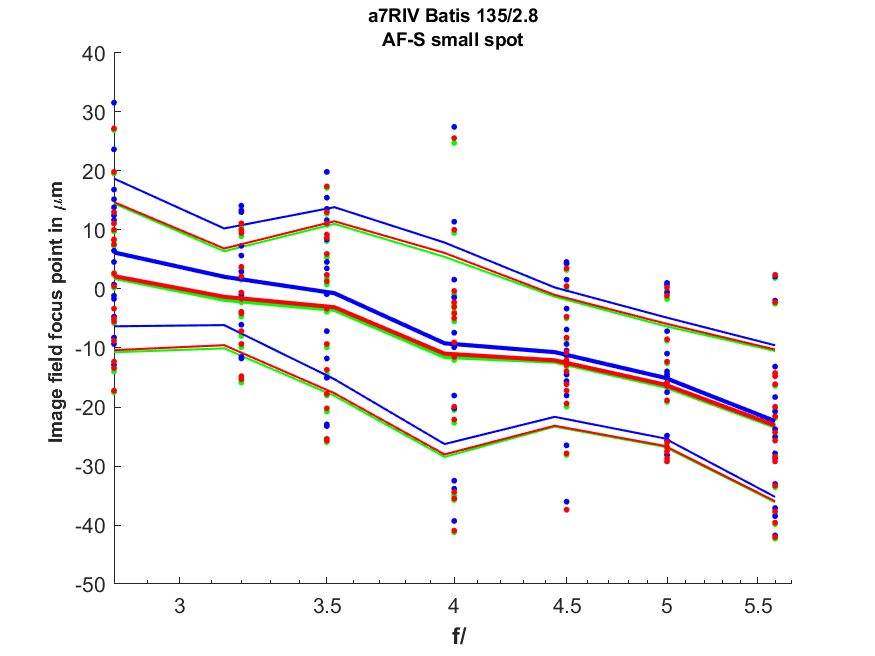
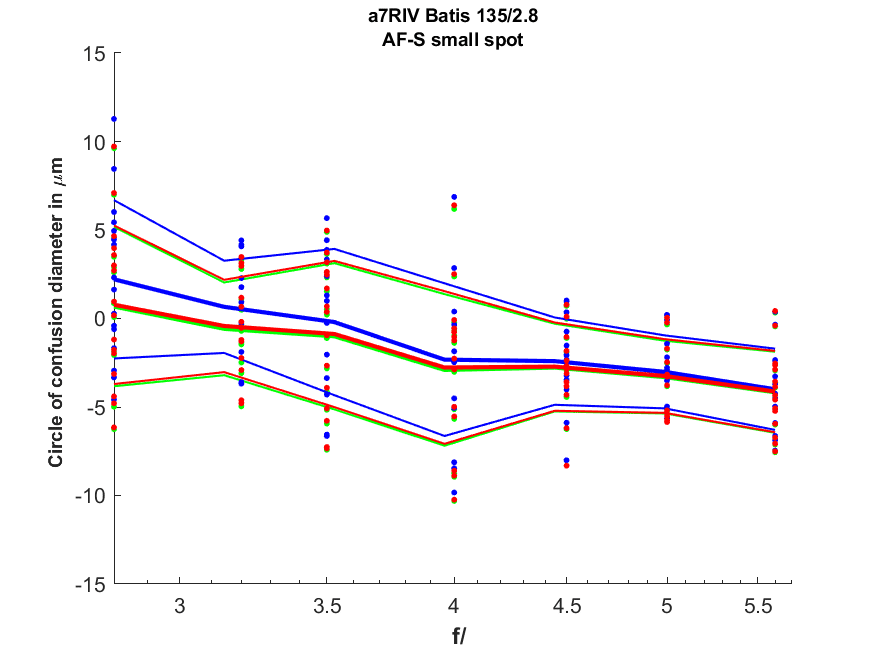
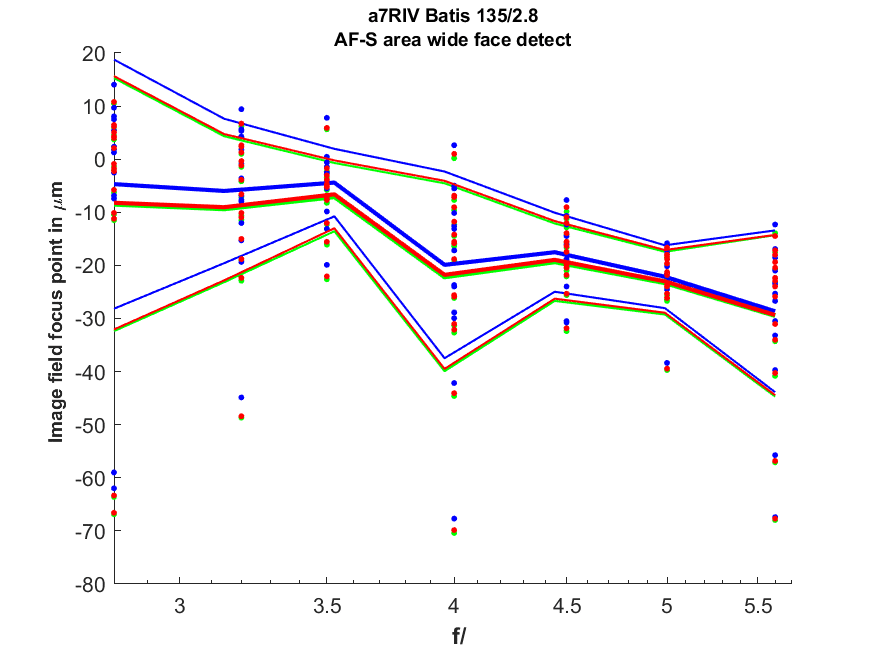
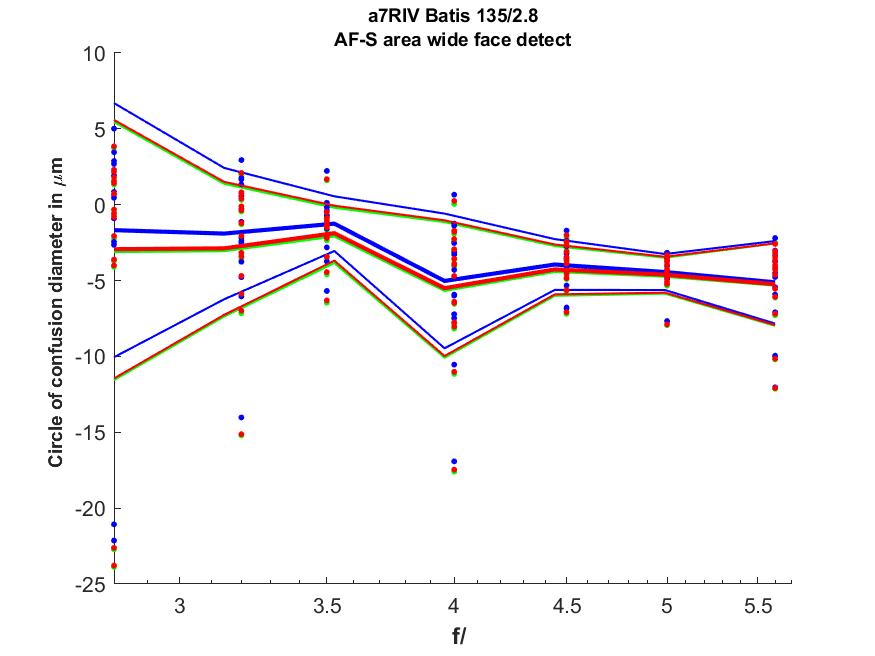
Very helpful. How does this compare to focus accuracy of the A7RIII . . . if you measured it? Thanks for all your work and posts about this camera.
I didn’t measure it with the Batis 135 and the a7RIII. Maybe later.
Thanks. I also love the Batis 135mm.
I wish the indexing bumple were red or white instead of the dark blue that’s hard to see in dim light.
Fully agree the Batis 135mm is a sweetheart of a lens, but this is the second post in which you’ve elevated it to f/2. Talk about meaningful slips. . .
I don’t think I missed it — what was the focus spot size in the first series?
Double oops. Thanks.
If you mean the first AF series, small. The concept doesn’t apply to the focus shift series, which used manual focusing.
Duh, getting too old. . .
Thank you for these tests! Saves a lot of time to get useful information in a distilled form. I tried to look at previous focus accuracy articles for full frame mirrorless and I got the impression that the accuracy here is at a similar general level but a bit worse than 40+ megapixel cameras. Would this be a valid assessment or is the data too different to draw a conclusion like that?
I don’t think the issue with higher-res cameras is that the CoCs are any bigger on an absolute scle, but that they are bigger in relation to the pixel pitch.
Hi Jim
Surely it can’t be considered good practice to test a camera’s autofocus accuracy with a non native lens?
Would you be able to redo the test with one of Sony’s latest lenses (135GM for eg)?
I don’t have that lens. There will be other AF tests. The Batis Is a native E-mount lens.
Thanks Jim, it’s just that I never 100% trust AF on 3rd party lenses on any system, even if they are native…
I will be testing some Sony lenses. My philosophy in choosing what to test is to test the gear that I’m interested in using. The Batis 135 is one of my favorite lenses. I like the balance with a7x bodies much better than that with the f/2 or f/1.8 135mm lenses. And the AF performance turned out to be fine.